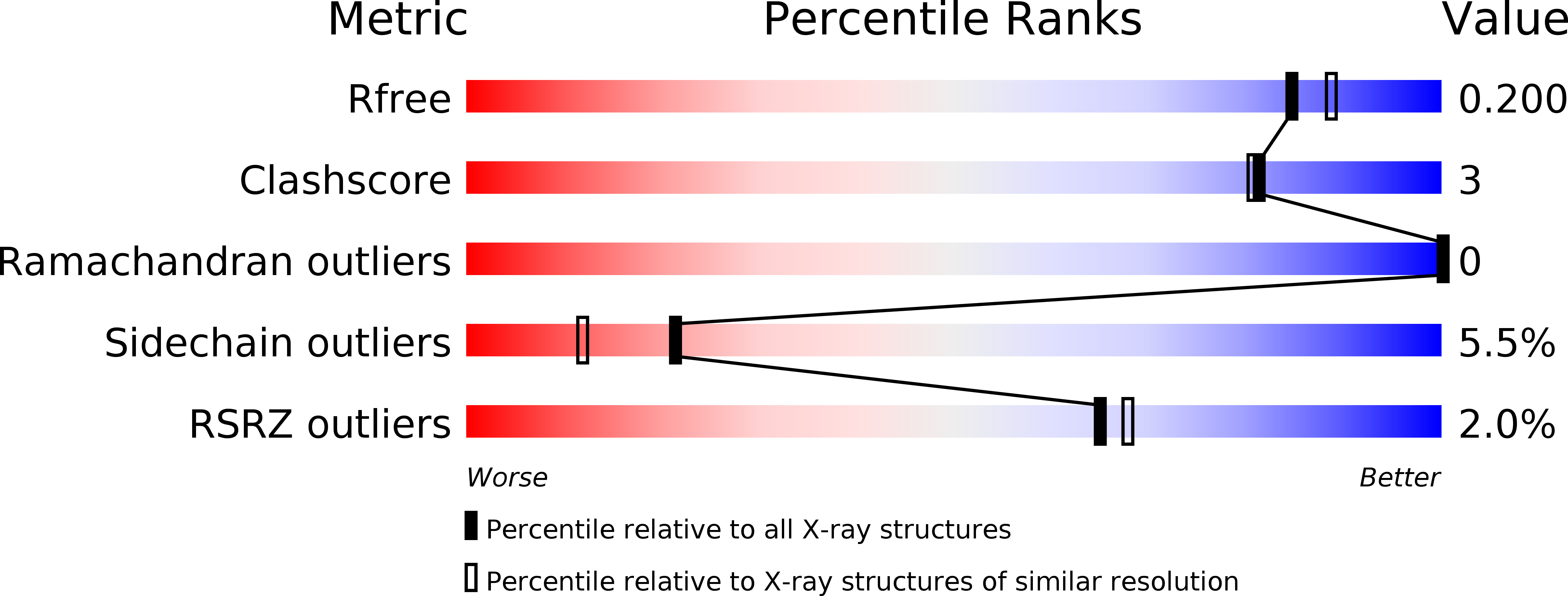Leishmania mexicana Glycerol-3-phosphate Dehydrogenase Showed Conformational Changes Upon Binding a Bi-substrate Adduct
Choe, J., Guerra, D., Michels, P.A.M., Hol, W.G.J.(2003) J Mol Biol 320: 335-349
- PubMed: 12758080
- DOI: https://doi.org/10.1016/s0022-2836(03)00421-2
- Primary Citation of Related Structures:
1N1E - PubMed Abstract:
Certain pathogenic trypanosomatids are highly dependent on glycolysis for ATP production, and hence their glycolytic enzymes, including glycerol-3-phosphate dehydrogenase (GPDH), are considered attractive drug targets. The ternary complex structure of Leishmania mexicana GPDH (LmGPDH) with dihydroxyacetone phosphate (DHAP) and NAD(+) was determined to 1.9A resolution as a further step towards understanding this enzyme's mode of action. When compared with the apo and binary complex structures, the ternary complex structure shows an 11 degrees hinge-bending motion of the C-terminal domain with respect to the N-terminal domain. In addition, residues in the C-terminal domain involved in catalysis or substrates binding show significant movements and a previously invisible five-residue loop region becomes well ordered and participates in NAD(+) binding. Unexpectedly, DHAP and NAD(+) appear to form a covalent bond, producing an adduct in the active site of LmGPDH. Modeling a ternary complex glycerol 3-phosphate (G3P) and NAD(+) with LmGPDH identified ten active site residues that are highly conserved among all GPDHs. Two lysine residues, Lys125 and Lys210, that are presumed to be critical in catalysis, were mutated resulting in greatly reduced catalytic activity. Comparison with other structurally related enzymes found by the program DALI suggested Lys210 as a key catalytic residue, which is located on a structurally conserved alpha-helix. From the results of site-directed mutagenesis, molecular modeling and comparison with related dehydrogenases, a catalytic mechanism of LmGPDH and a possible evolutionary scenario of this group of dehydrogenases are proposed.
Organizational Affiliation:
Department of Biochemistry, Biomolecular Structure and Design program, University of Washington, Seattle 98195-7742, USA.















